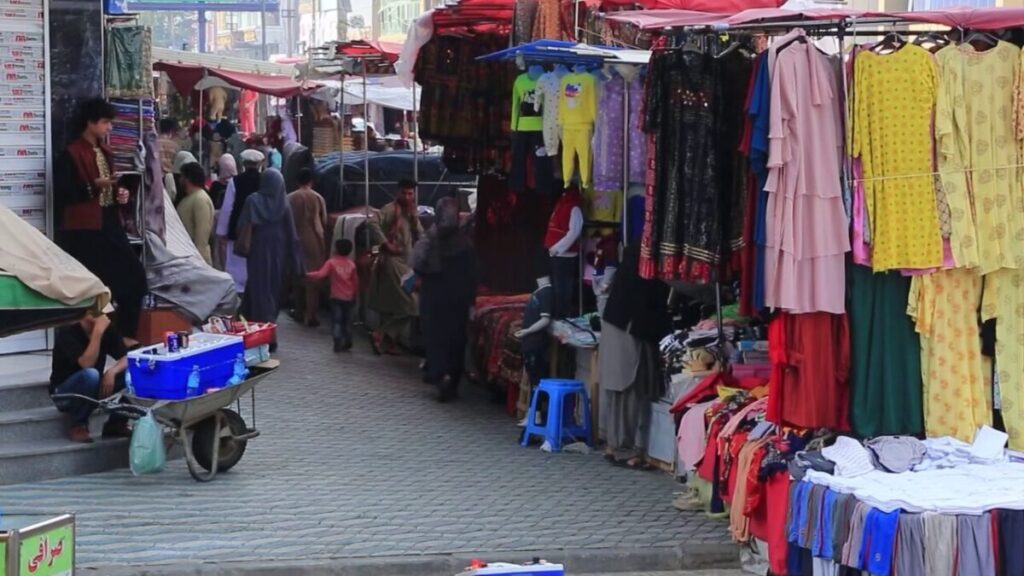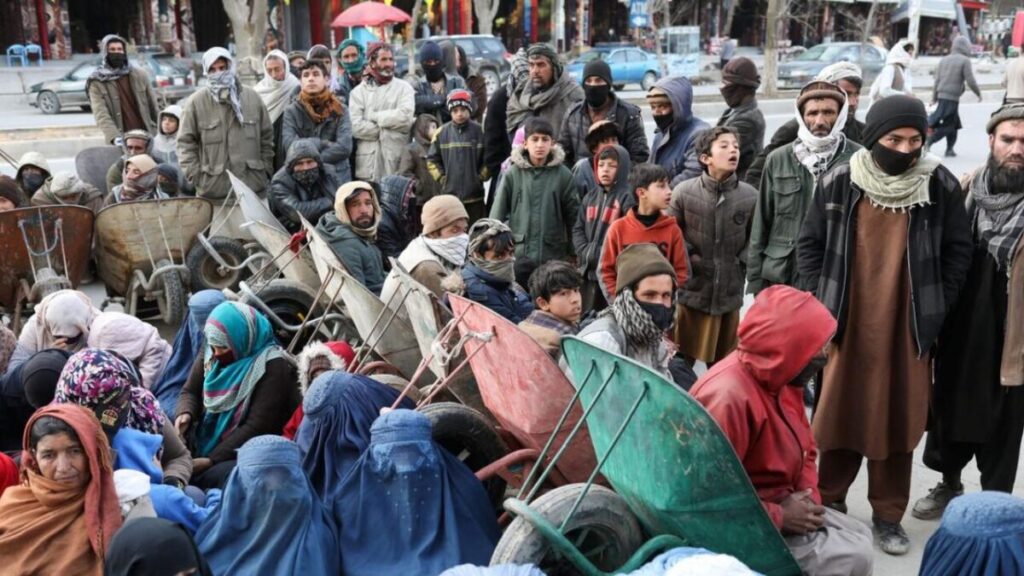A field study conducted by Amu reveals that 24 individuals across eight Afghan provinces witnessed 58 cases of forced marriages over the past two years.
The study sheds light on the complex and intertwined causes behind these marriages, including economic hardship, cultural pressures, and the Taliban’s ban on education for women and girls. The findings expose how the Taliban’s increasingly oppressive policies have exacerbated an already dire situation for Afghan women and girls.
According to the research, “economic poverty, family pressure, harmful cultural practices, including illiteracy, and the Taliban’s ban on education for women and girls” were identified as the leading causes of forced marriages during this period. The study was conducted in Farah, Bamyan, Daikundi, Paktia, Kunduz, Faryab, Jawzjan, and Parwan provinces, capturing the voices of those directly affected by or witnesses to these marriages.
“I was denied my right to education and personal freedom. Once the schools were shut down, I had no choice but to marry. This is the price I paid for the Taliban’s policies,” she said. “I wanted to have a say in my own future, but that decision was taken away from me.”

Forced marriages on the rise under Taliban rule
The Amu study reveals a disturbing rise in forced marriages since the Taliban returned to power in August 2021, with economic poverty cited by 37.5 percent of respondents as the primary factor driving families to force their daughters into marriage. Another 37.3 percent pointed to cultural norms—such as exchanging daughters to settle disputes or giving girls away in marriage to strengthen family ties—as significant contributors. These traditions, deeply rooted in Afghan society, have been compounded by the economic devastation and the Taliban’s restrictions on women’s rights, leaving many families with little choice.
According to 20.8 percent of those surveyed, the Taliban’s ban on education for girls has played a key role in increasing forced marriages. With girls barred from attending school, families see few prospects for their daughters outside of marriage. “The ban on education for women and girls has been devastating, forcing families to see marriage as the only viable future for their daughters,” the study reports.
Since seizing control of Afghanistan in 2021, the Taliban have systematically dismantled institutions that once worked to protect women’s rights, including the Ministry of Women’s Affairs, which played a crucial role in preventing forced marriages. Instead, the responsibility for addressing forced marriages has been transferred to the Taliban’s Ministry for the Propagation of Virtue and the Prevention of Vice. While Taliban officials claim they have prevented cases of forced marriage, reports from the ground suggest the problem has only worsened.

Taliban’s claims versus reality
In a public statement on August 21, 2023, Mohibullah Makhles, head of planning for the Taliban’s Ministry for the Propagation of Virtue and the Prevention of Vice, claimed that the ministry had prevented 338 cases of forced marriages, as well as 205 cases of women being sold for money. Makhles also stated that the Taliban had intervened in over 1,300 instances of family disputes, turning “enmity into friendship.” However, these claims contrast sharply with the findings of Amu’s study, which suggest that forced marriages remain a widespread and deeply entrenched problem across the country.
Devastating consequences for women and girls
The Amu research also highlights the devastating psychological, emotional, and physical consequences of forced marriages. Thirty-seven percent of respondents reported that forced marriages led to domestic violence, with women and girls subjected to beatings and abuse by their husbands and in-laws. In many cases, these marriages involve young girls, sometimes as young as 10 or 12, married off to men decades older than them.
Another 16.6 percent of respondents said forced marriages led to mental health issues, with girls suffering from depression, anxiety, and other psychological disorders as a result of their treatment. Additionally, 12.5 percent reported that forced marriages resulted in suicide, while the same percentage cited women fleeing their homes to escape abusive marriages. “Forced marriages leave girls and women in desperate situations, with no real way out,” the study notes. “For some, fleeing is the only option, and for others, tragically, suicide becomes the only escape.”
“I suffered years of abuse—physical, emotional, and mental. I was beaten, tortured, and controlled by my husband and his family. The violence was relentless,” she said. “I even lost my three daughters—they were taken from me. But despite everything, I refused to surrender. I fought back, spoke out, and paid the price with imprisonment and more violence.”
Firsthand accounts of forced marriage
“I suffered years of abuse—physical, emotional, and mental. I was beaten, tortured, and controlled by my husband and his family. The violence was relentless,” she said. “I even lost my three daughters—they were taken from me. But despite everything, I refused to surrender. I fought back, spoke out, and paid the price with imprisonment and more violence.”
The personal stories uncovered during Amu’s investigation provide a stark picture of the human toll forced marriages are taking on Afghan women and girls. Gulalai, one of the interviewees, shared her experience of being forced into marriage after the Taliban closed schools and universities to women. “I was denied my right to education and personal freedom. Once the schools were shut down, I had no choice but to marry. This is the price I paid for the Taliban’s policies,” she said. “I wanted to have a say in my own future, but that decision was taken away from me.”
Mahtab Iftikhar, another victim of forced marriage, recounted her story of being married off at just 10 years old. “I suffered years of abuse—physical, emotional, and mental. I was beaten, tortured, and controlled by my husband and his family. The violence was relentless,” she said. “I even lost my three daughters—they were taken from me. But despite everything, I refused to surrender. I fought back, spoke out, and paid the price with imprisonment and more violence.”

Sitara, a witness to forced marriage, described a harrowing incident involving a young woman who was forced to marry a man addicted to drugs. “She was pregnant when her husband accused her of infidelity, despite there being no truth to it. He and his cousin beat her so severely that she lost both her life and her unborn child,” Sitara recounted. “They buried her in secret.”
Poverty: The driving force behind forced marriages
Economic hardship is consistently cited as a major factor in the perpetuation of forced marriages. Nazanin, another interviewee, explained how financial difficulties push families to marry off their daughters, often to much older men. “Families facing extreme poverty feel compelled to marry off their daughters early to ease their financial burden,” Nazanin said. “I’ve seen families give away girls as young as 12 or 14 to men in their 30s or 40s, hoping that the marriage will improve their financial situation.”
Forced marriages have become an economic strategy for many Afghan families struggling to survive. While the Taliban’s strictures on education and women’s rights have exacerbated the situation, the root causes—poverty, cultural norms, and illiteracy—have deepened over decades of conflict and instability.

A problem without a solution in sight
Forced marriages in Afghanistan take various forms, including child marriage, bride exchanges, and, in some cases, the outright sale of women. Despite years of efforts to combat these practices, the problem persists, with little sign of progress. The Taliban’s claims of having addressed forced marriage ring hollow in the face of the evidence on the ground, where women and girls continue to be victimized.
For generations, forced marriages have trapped Afghan women and girls in cycles of violence, deprivation, and abuse. While international organizations and former Afghan governments have made attempts to address the issue, the Taliban’s resurgence has erased much of the progress that had been made. Without serious intervention, the suffering of Afghan women and girls will only continue, with forced marriages claiming victims across the country for years to come.
The Amu study provides a detailed and disturbing account of forced marriages in Afghanistan, revealing the profound suffering caused by the Taliban’s policies and the cultural and economic forces that drive these marriages. While the Taliban claim to be tackling the issue, the reality is that forced marriages remain an all-too-common reality for Afghan women and girls, with devastating consequences for their futures.





